Butterflies are unquestionably the most popular and universally loved insects. You would be hard pressed to find someone that fears or loathes butterflies in the same way a lot of folk’s fear and loathe moths, for example. Even if butterflies are basically glorified, diurnal moths themselves. Butterflies and moths both belong to the order Lepidoptera and although moths first appear in the early Jurassic, 200 million years ago, butterflies don’t show up until the Paleocene, 56 million years ago, having evolved directly from moths.
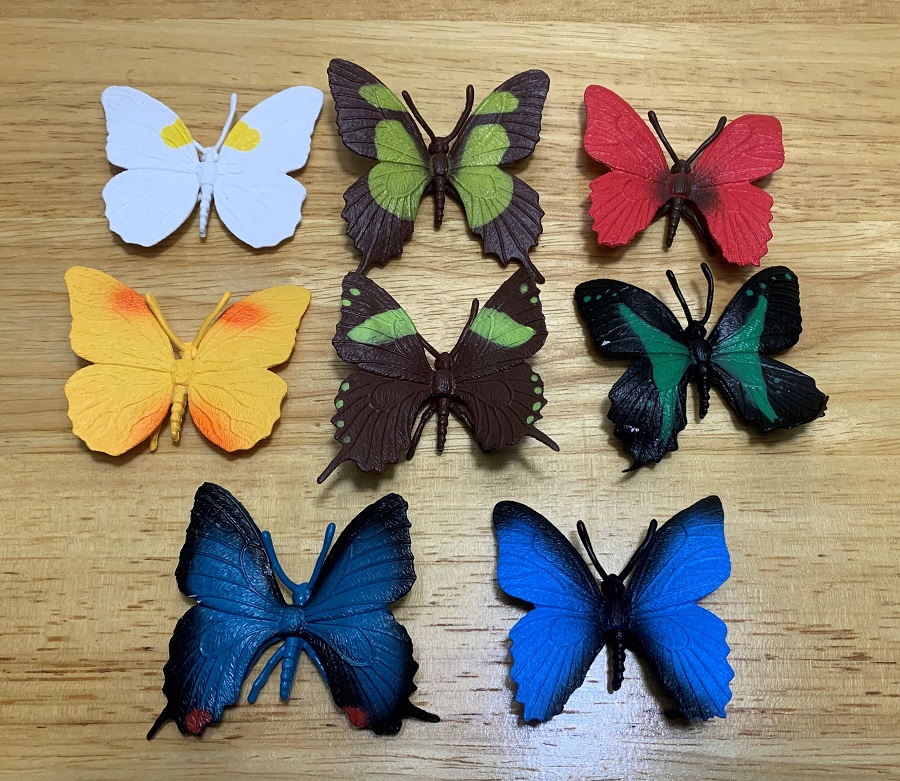
Butterflies can be found around the world in a diverse range of attractive colors and patterns. That, along with their diurnal habits, peaceful nature, and association with flowers all work together to help their popularity. As such butterflies are also some of the most popular insects in the toy industry, as far as western companies are concerned. Insects in general are much more popular in Japan and well represented there, but considerably less so in Europe and North America. All that said, most toy butterflies represent the same few species or are just generic toys that don’t represent any species in particular. Today we’re looking at Safari’s 2011 butterfly toob, a collection of 8 distinct butterfly species from around the world.

Before we look at each figure individually, I would like to review the set as a whole. It’s a mixed bag. Although I commend Safari’s effort to highlight some truly unique species there are a lot of things that I dislike. For one, all the bodies are the same generic butterfly body and they’re almost all the same color as the primary color on the wings. In addition, because they’re TOOB figures with thin plastic wings there is a lot of warping going on, with the wings of some figures being severely bent and misshapen. The shape of the wings mostly matches up with the actual species, but they’re not all perfect, and the coloration and patterning are greatly simplified. Colors and patterns on the dorsal surface match those on the underside, even when they should differ. I do like that the wings are nicely sculpted with veins and scaly texturing. The name of each species is clearly printed on the underside of the wings, some of the names are the common names and some of them scientific, but I’m happy with how specific they are.

White-angled Sulphur (Anteos clorinde): This species can be found in the Southern United States and south to Argentina as well as in Cuba, Jamaica, and Hispaniola. The figure is all white with a yellow patch on each forewing, making it a male. Females have a faint patch, or no patch at all. The figure has a wingspan measuring 53.9 mm while the white angled sulphur has a 64-94mm wingspan. This puts the figure and slightly less than 1/1 scale.
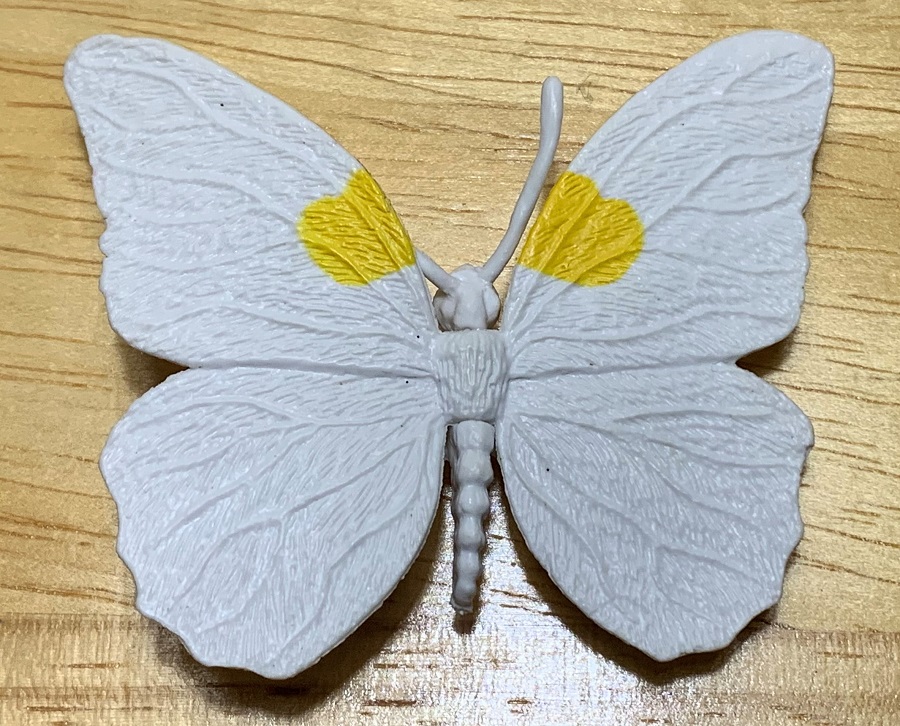
Orange-barred Sulphur (Phoebis philea): This species can be found the Southern United States and south to Brazil. The figure is entirely painted in yellow save for the orange markings on the fore and hindwings, making it a male. The species has a wingspan of 65-80 mm with females being larger. The toy’s wings are the same mold used for the white angled sulphur, so it is also slightly less then 1/1 scale.

Red Glider (Cymothoe sangaris): This species, also known as the blood-red glider, comes from central Africa. This figure has flat colored, red wings, and a brown body. There is some blending of the red and brown along the back. Butterflies of this genus have a wingspan of 40-70 mm while that of the toy is 50.8 mm, this puts it within the 1/1 scale range.

Menelaus Blue Morpho (Morpho menelaus): This species comes from Central and South America. The figure is blue with blended black edging along the wings and a black body. This is a large species with a 120 mm wingspan. The toy’s wingspan measures 50.8 mm, putting it at about 1/2.35 in scale. The wing mold is also the same one used for the red glider.
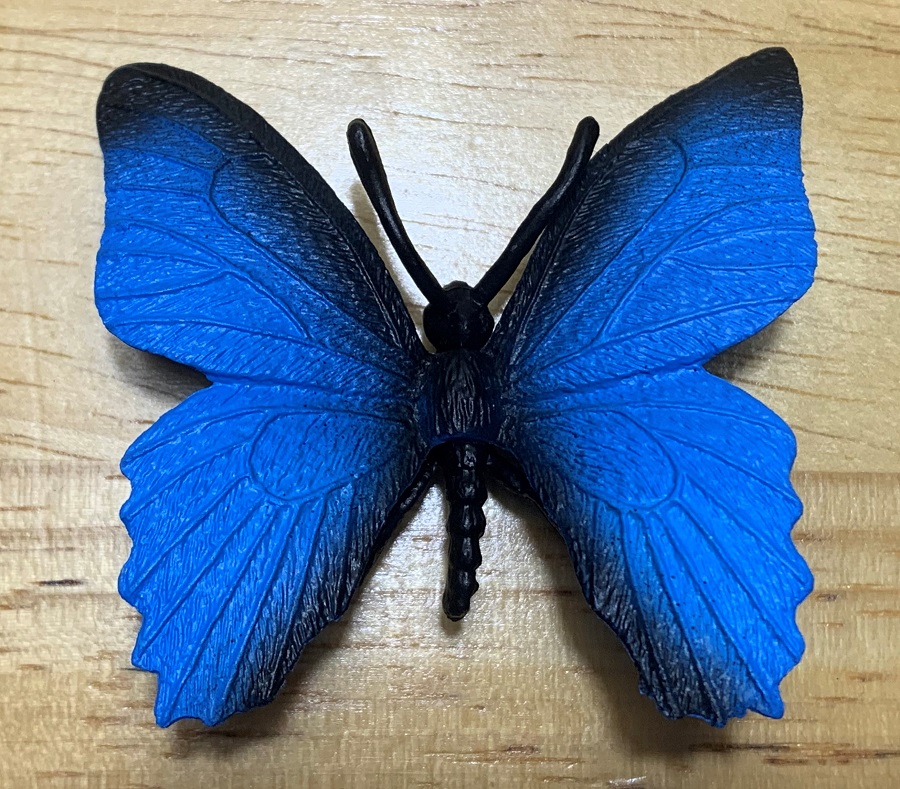
Garlepp’s Swallowtail (Papilio garleppi): This is another South American species and it should now be apparent that most of the toys in this TOOB are New World species. The figure is mostly brown with large swaths of yellow on the fore and hindwings, and additional yellow patches higher up on the forewings. The toy has a wingspan of 53.9 mm but I cannot find a wingspan for the species itself.
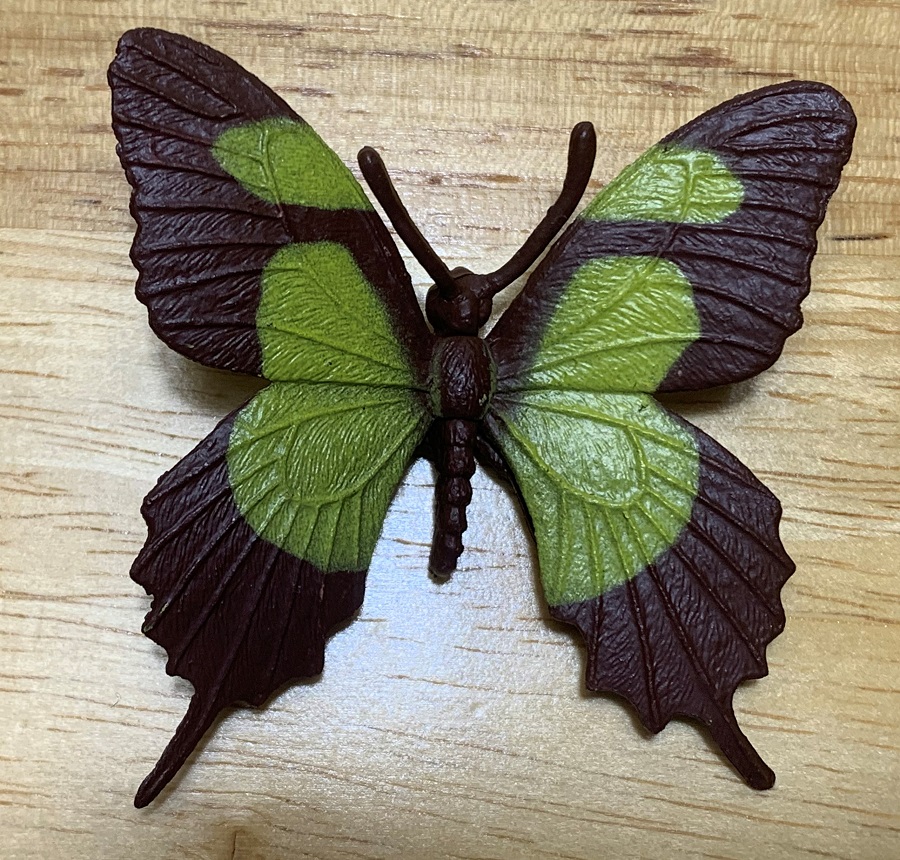
Regal Hairstreak (Evenus regalis): A Neotropical species, the regal hairstreak is blue dorsally but iridescent green on the underside. On all of these figures the coloration on the underside is identical to the dorsal surface, even if it shouldn’t be. The figure is painted blue with blended black edging along the sides and a prominent red spot on each forewing. I cannot find the wingspan for this species but with a forewing length of 63.5mm this is the largest toy in the TOOB.

Green Swallowtail (Papilio blumei): Also known as the peacock butterfly this species is only found on the Indonesian island of Sulawesi. The figure is black with green swaths on the fore and hindwings and additional green speckling elsewhere. This species has a wingspan of 120–140 mm while that of the toy is 53.9 mm putting the figure at about 1/2.5 in scale.
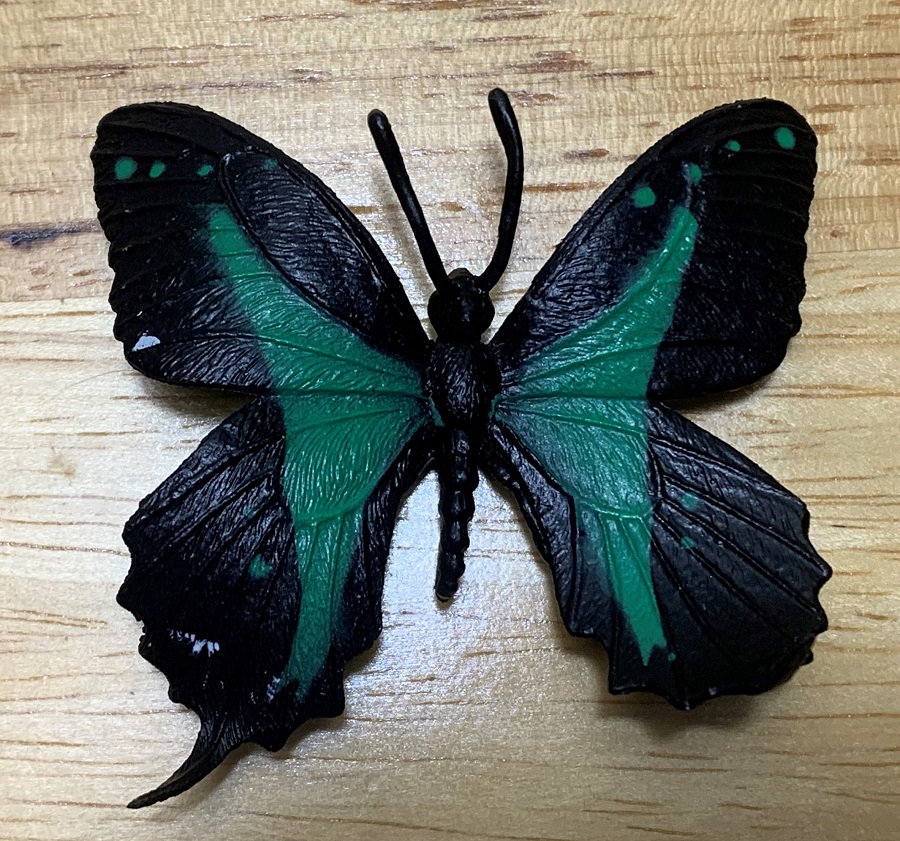
Jazzy Leafwing (Hypna clytemnestra): This is another Neotropical species for which I cannot find a wingspan, or even reliable range information. Safari really got obscure with some of their picks for this set. The figure is dark brown with yellow bars on the forewings and yellow spots on the edges of the fore and hindwings. The underside should look like a dead leaf, hence the name, but it looks the same as the dorsal side. The figure has a wingspan of 50.8 mm [Editor’s note: this figure was originally marketed as Anaea clytemnestra].
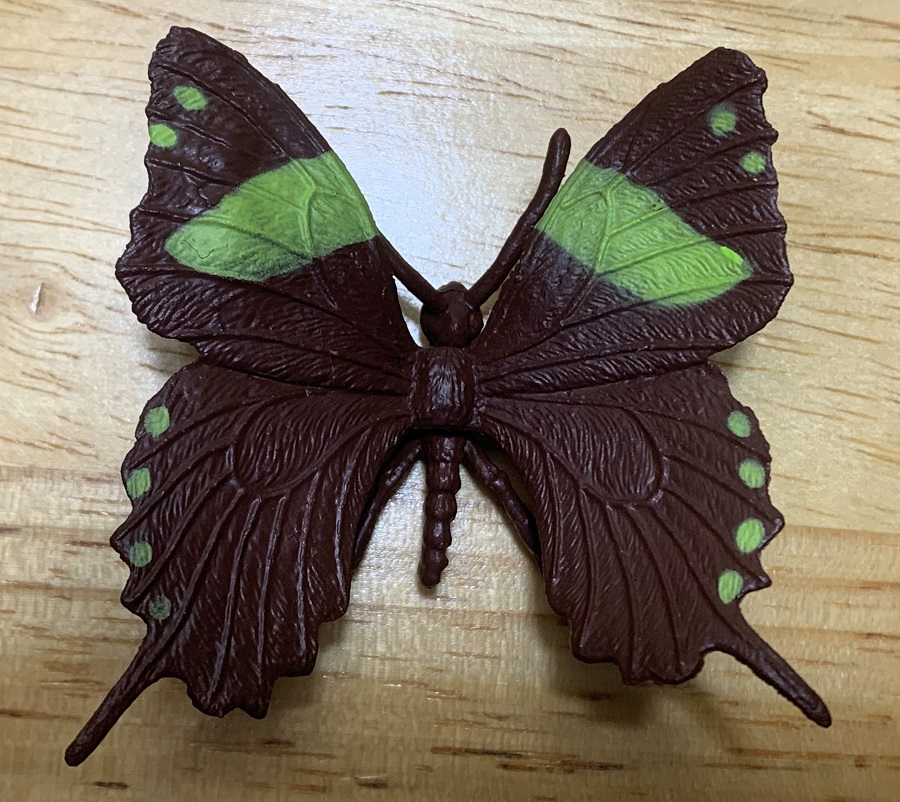
And that’s it, that’s the set. Overall, it is not a bad set in terms of diversity but I do have to lament the lack of more precise accuracy on a lot of these. Someone skilled with paint could no doubt add a lot of additional detail in order to make them more true to life. My many personal nitpicks aside, the TOOB does do a great job at introducing a lot of really obscure species into the mass market, many that I’ve never heard of prior to owning it. I have to say that this was a somewhat frustrating set to research. Although a few of these butterfly species had in-depth writeups online, many of them did not. For many of the butterfly species all I could find was their pinned bodies for sale. At any rate, the Safari butterfly TOOB is still in production and can be found for about $13.99.
Disclaimer: links to Ebay and Amazon on the AnimalToyBlog are affiliate links, so we make a small commission if you use them. Thanks for supporting us!




Wonderful, thank you for reviewing this set. This is the Blog’s third collection of butterflies! I must come up with a fourth…
I also just noticed that these three sets each have a different species in the genus Morpho!